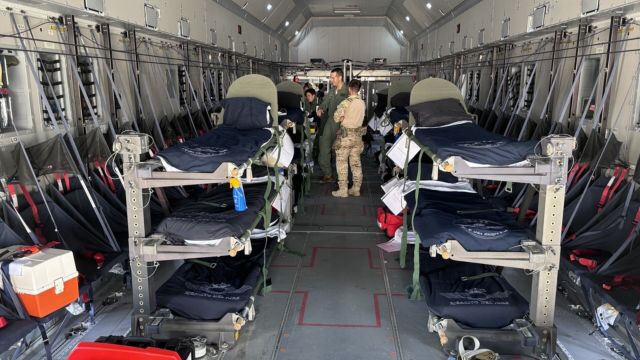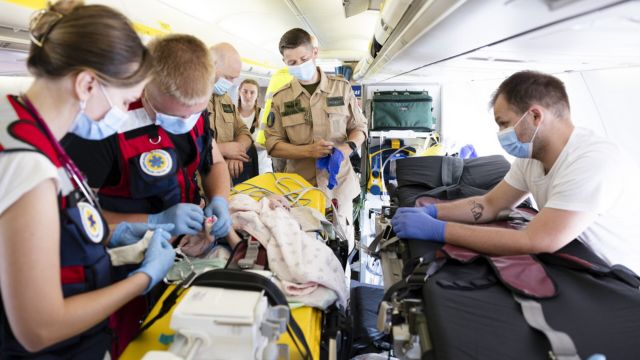The value of medical supplies cannot be emphasized in times of crisis—natural disaster, humanitarian emergency, public health issue like a pandemic, or another. Often the first line of protection for underprivileged populations is emergency and disaster relief efforts; medical supplies are therefore extremely important in saving lives and lessening the long-term effects of crises. From sophisticated medical equipment to simple first aid kits, timely distribution of medical supplies can make all the difference between life and death.
Understanding Medical Supplies in Disaster Relief
Medical supplies are a broad spectrum of items absolutely necessary for handling medical situations. These supplies cover everything from bandages and gauze to advanced medical tools including mobile field hospitals, defibrillators, and ventilators. These products are essential for treating injuries, preventing infections, managing chronic ailments, and offering long-term recovery support for impacted populations in an emergency or disaster relief effort.
Medical supplies in emergency situations serve several key purposes:
- Immediate care: Basic supplies like bandages, wound dressings, and splints are essential for addressing injuries in the immediate aftermath of an incident.
- Preventing infections: In disaster zones, sanitation is often compromised. Medical supplies like antiseptics, gloves, and sterile dressings help prevent the spread of infectious diseases.
- Long-term recovery: Critical medical devices and supplies are needed to stabilize patients and provide necessary care until survivors can access more permanent healthcare services.
You may like this: The Role of Medical Supplies in Ambulatory Care Centers vs. Hospitals
Types of Medical Supplies Essential for Disaster Relief

The type of medical supplies required depends on the kind of disaster and the degree of injuries received by the impacted population. Still, some types of medical supplies are absolutely important in every case involving disaster relief.
- First Aid Kits:
Every emergency response team must have a well-stocked first aid kit. These kits contain the basic supplies needed for treating injuries and providing first-level care, such as bandages, antiseptic wipes, gauze, and pain relievers. First aid kits are particularly essential in the initial hours when medical personnel might be overwhelmed or difficult to access. - Personal Protective Equipment (PPE):
PPE, including gloves, face masks, face shields, and gowns, is essential for healthcare workers to protect themselves and prevent the spread of infectious diseases. In the context of the COVID-19 pandemic, PPE became a critical component in disaster relief operations, but its role in preventing contamination and ensuring worker safety has been crucial in all types of emergencies. - Medications and Vaccines:
Medications for treating pain, controlling infections, and managing chronic conditions like diabetes or hypertension are fundamental to medical relief efforts. Moreover, vaccines may be needed to prevent outbreaks of diseases in the aftermath of a disaster, such as tetanus after a flooding event or cholera in areas with poor sanitation. - Medical Equipment:
More advanced medical supplies, such as portable ventilators, defibrillators, oxygen tanks, and mobile diagnostic equipment, are necessary for treating patients with severe injuries or underlying conditions. These types of equipment are often deployed to field hospitals, mobile units, or makeshift clinics set up in disaster zones. - Water and Sanitation Supplies:
Safe drinking water is often scarce in disaster-stricken areas. Supplies to purify water, such as iodine tablets or water purification kits, are critical in preventing the spread of waterborne diseases. Alongside water, sanitation supplies like portable toilets, disinfectants, and waste disposal bags are essential for maintaining hygiene in crowded disaster zones.
The Challenges of Distributing Medical Supplies in Disaster Zones
Although medical supplies are obviously needed, the practicalities of getting them to disaster-torn regions might present difficulties. Aid agencies may find it challenging to get supplies to the correct locations due to damaged roads, inadequate infrastructure, and lack of access to essential services. Furthermore, the great demand for medical goods can cause shortages that force relief agencies to give life-saving tools and fundamental treatment top priority.
Good distribution calls for good collaboration among local healthcare systems, foreign assistance organizations, and government agencies. Ensuring that supplies rapidly reach the most impacted areas and are distributed fairly depends on communication and real-time tracking technology.
Innovations in Medical Supplies for Disaster Relief
Medical technology has advanced recently to significantly increase the portability and efficacy of medical supplies in disaster relief activities. For example, telemedicine technologies and mobile clinics let doctors give remote consultations and diagnostics even in quite far-off areas. Furthermore fast deployment of lightweight, compact medical equipment including battery-powered medical gadgets and portable ultrasounds machines to locations in need is possible.
Moreover, the development of 3D printing has made it possible to quickly manufacture prosthesis, medical tools, and even medications under shortage. Particularly in cases when conventional manufacturing techniques cannot meet demand, this invention allows fast response times.
You may like this: How to Ensure the Quality of Imported Medical Supplies: Key Steps for Safe and Reliable Products
Conclusion: The Lifesaving Impact of Medical Supplies
Medical supplies are lifelines in emergency and disaster aid rather than merely commodities. From simple first aid to life-saving operations, these materials help with anything from instantaneous treatment to long-term recuperation. It is impossible to overestimate their contribution to guaranteeing a coordinated, successful reaction to emergencies. Availability and effective delivery of these materials determine whether one can save lives, stop infections, and offer continuous medical support.
Medical supplies must be kept, controlled, and distributed effectively as we negotiate an increasingly erratic global temperature and more frequent disasters. By means of technological developments and enhanced logistical operations, the future of disaster relief can be even more efficient, therefore ensuring that communities get the required assistance when most needed.
Our first goal at J & J Supplies is to provide the best quality medical supplies for any requirement. Our professionals are here to help you whether your needs are for knowledge about clinical engineering advancements, preparation for an emergency, or operation of a healthcare facility. With the newest in medical supply solutions, keep updated and guarantee your preparedness. See us for materials and updates on the most important safety and healthcare concerns.








